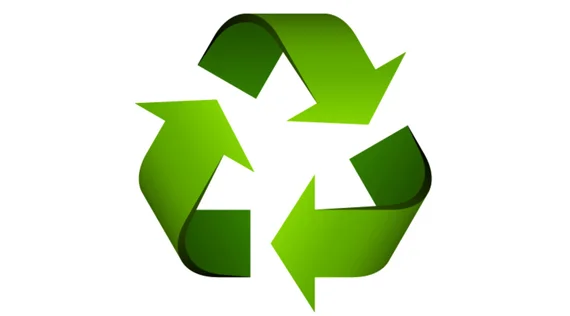
SEATTLE (Waste Advantage): Can manufacturers and waste professionals, while seemingly at opposite ends of the value chain, have more in common than one might think. The biggest connection: Both maintain an obligation to minimize landfill contributions and foster a more circular economy. In the U.S., striking this balance remains challenging, given factors like an ongoing lack of infrastructure for recycling systems and a gap in consumer education and commitment to recycling. In fact, according to the U.S. EPA’s last report in 2018, more than 50 percent of municipal solid waste (MSW) was sent to landfill that year, and only 32 percent of MSW was recycled. Yet, a more positive outlook for recycling is possible, due to unique advantages found through recycling cans. By understanding substrate nuances and using the material to strengthen waste streams, as well as creating greater awareness of the impact of can recycling, the waste collection industry can make realistic progress toward a more sustainable future.
Focusing on the Right Materials
Waste professionals, while tasked with managing a wide range of materials, know that not all packaging is created equally. Some consumer-packaged goods waste is truly debris and has a set path to landfill, while some is salvageable for reuse or recycling. Aluminum and steel cans take the definition of “recyclable” to a higher standard, representing a substrate that is inherently circular and can be recycled infinitely with zero loss in durability or quality.
This level of circularity offers several sustainability benefits to the waste collection industry and beyond. For one, properly recycling metal cans and using that recycled material to produce new goods saves more than 90 percent of the energy required in production using virgin materials. That entire can-to-can process can happen within just 60 days—making the concept of recycling very tangible and impactful. Additionally, effectively recycling metal packaging saves precious materials from going to landfill unnecessarily and causing further strain on the planet’s natural resources. All of this results in less energy consumption, reducing carbon emissions, and fostering greater climate action.
On an economic front, recycling metal packaging yields equally critical value. Aluminum and steel are two of the highest-valued substrates in the recycling stream, due to their circularity and strength. According to the Can Manufacturers Institute (CMI), aluminum beverage cans in non-deposit states account in a typical material recovery facility (MRF) for 33 percent of the revenue, more than any other single material commodity. Without the revenue from UBCs, most MRFs would not be able to operate, meaning the larger recycling system is heavily dependent on metals to remain functional. This demonstrates how imperative it is for the waste collection industry to focus on metal packaging and work diligently to recapture as much of it as possible.
By creating extra system support for substrates like metal that serve as such low-hanging, valuable fruit, the industry can better fund overall collection and improve overall recycling rates.
Investing in Communities
Despite the economic and environmental value of aluminum and steel cans, only a respective 45 percent and 58 percent are currently recycled each year in the U.S. While still at a higher percentage than some substrates, this number has the potential to skyrocket with the right strategies and support—and it is crucial that it does rise to create a stronger closed loop that minimizes material waste and energy consumption. When it comes to beverage cans in particular, CMI’s research shows that if all used cans were recycled, that would result in another $940 million of economic value in the U.S.—underscoring the importance of improving consumer compliance and system effectiveness.
To contribute to increased recycling rates for metal packaging, the waste collection industry can prioritize efforts in two core areas.
#1: Building Greater Infrastructure
Recycling systems remain inconsistent in states across the nation in terms of sorting capacity and legislative backing. The can manufacturing industry is leveraging a couple of tactics to increase attention toward and effectiveness for these systems, including:
• Advocating for stronger recycling policies at the city or state level, such as a deposit return scheme (DRS), in which consumers are incentivized to return their used beverage packaging; and extended producer responsibility (EPR), which places more accountability with consumer-packaged goods companies and their suppliers to monitor their products throughout their complete life cycles and strive to minimize the impact of that life cycle. Other influential policies may involve incentives or requirements for manufacturers to use recycled content in their products, and limits on the use of non-recyclable, minimally recyclable, or difficult-to-recycle materials.
• Finding opportunities for more effective sorting equipment, with the goal of increased can capture rates that save more cans from mistakenly going to landfill. Industry actions currently in play include investments in robotics and other technologies that more accurately differentiate between substrates and prioritize valuable metal packaging at MRFs. Additionally, communities can strengthen their infrastructure by making collection points like curbside recycling more accessible, as well as working with legislators to create more viable pathways between MRFs and manufacturing suppliers seeking recycled material.
#2: Driving Awareness and Accountability with Consumers
For recycling rates for metal cans and all substrates to improve, the entire consumer-packaged goods value chain must understand that consumer engagement and education are essential. For consumers to commit to recycling, they need brands, retailers, waste collectors and government bodies all demonstrating what goods are recyclable, how to properly recycle them, and why it all matters. They also need recycling to be accessible (speaking again to infrastructure) where they are in their communities. A few ways the manufacturing industry and waste collection industry can continue to encourage consumer action include:
• Ingraining positive recycling habits in younger generations and families. One effective example of how to target this demographic is to create interactive recycling challenges at academic institutions or at community venues such as sports games, concerts, or parks, through which consumers can learn about different substrates and practice good habits.
• Correcting misconceptions about recycling with all demographics, including investing in community-distributed materials that show the impact of recycling and the role that each individual has in creating an effective system.
• Using the connections and reach of industry associations to help create more of a nationwide narrative around current waste collection industry goals for recycling and the ways consumers can be a part of the solution.
The Value Chain
Ultimately, whether through infrastructure improvements and legislative support or consumer activation and greater understanding of recyclable materials, strengthening the U.S. recycling system requires an underlying sense of responsibility from the entire value chain. Manufacturers, brands, retailers, consumers, waste collectors, and legislators—all have to work in tandem to drive progress toward higher recycling rates. By starting with collaboration around aluminum and steel cans, that progress falls within reach.
Courtesy: www.wasteadvantage.com



| Copper Scrap View All | |
| Alternator | 0.38 (0) |
| #1 Copper Bare Bright | 4.34 (-0.07) |
| Aluminum Scrap View All | |
| 356 Aluminum Wheels (Clean) | 0.80 (0) |
| 6061 Extrusions | 0.70 (0) |
| Steel Scrap View All | |
| #1 Bundle | 370.00 (-15) |
| #1 Busheling | 390.00 (-15) |
| Electronics Scrap View All | |